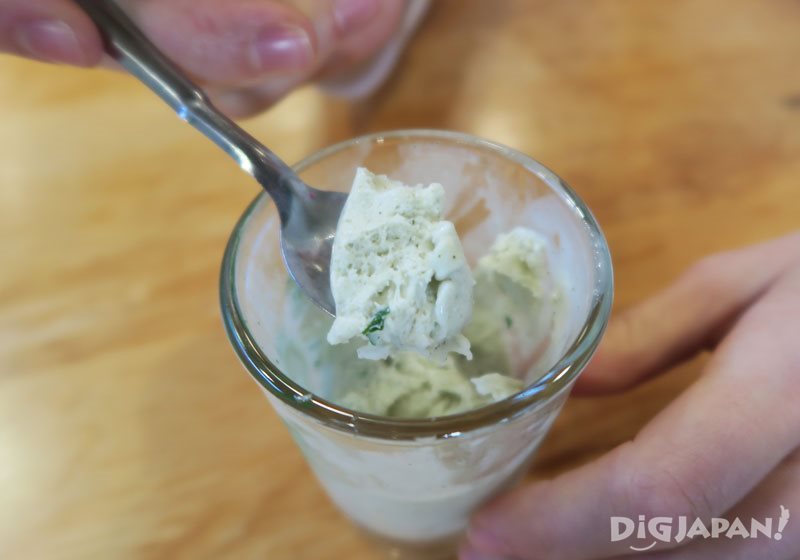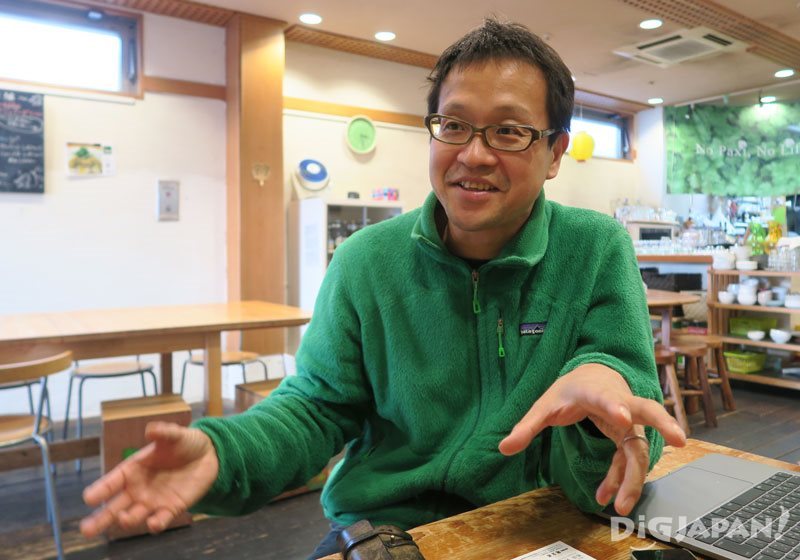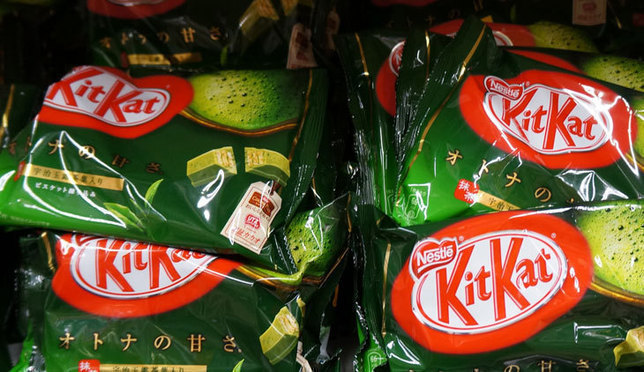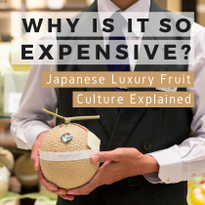- TOP
- Search Criteria
- Coming Together Over Coriander at Paxi House Tokyo

STORY
Coming Together Over Coriander at Paxi House Tokyo
My first real memory of coriander was in New York at a Mexican restaurant. A friend of mine decided to split an order of guacamole, and the wait staff came to the table to make it. And inside this heavenly mix was copious amounts of coriander. I was a fan at the first bite. *Paxi House Tokyo closed in March, 2018.

Living in Japan has made it hard to fuel my love of this herb. It's not something readily available in all grocery stores, and typically only makes appearances in Thai or Vietnamese food (Mexican is still by and large hard to come by here).

Yet despite its cameo role-status in Japan's culinary culture, I was surprised to find that many Japanese professed a dislike if not downright hatred for the stuff. I mean, sure, not everyone was likely to be as enthusiastic as me, but I hadn't expected so much anti-coriander sentiment.

That's why it’s surprising that Paxi House, a restaurant specializing in coriander cuisine that uses every part of the plant, could even be a thing in Tokyo. In fact, Paxi House claims that it is the first restaurant in the world to specialize in “coriander cuisine.” And true to its name, everything is made with coriander-- even dessert.

A note about dessert: because my coworker and I wanted to take a picture of all of our food at once, the ice cream had to be the first thing we tried before it melted. While everything we tried there was delicious, the coriander ice cream is in my opinion why you must make the journey here. This ice cream is made with decadently rich cream and coriander-salt, giving this dessert a salted-caramel-like savory-sweetness. It's also topped with honey made with coriander and roasted coriander seeds. (For any creative foodies, Paxi House sells the coriander salt should you want to attempt to recreate the recipe at home.)

The other dishes we tried were also amazing and, it goes without saying, packed with coriander.

But why coriander? Precisely because it’s not something that appears in Japanese cuisine, meaning that most Japanese come across this herb either in ethnic cuisine in Japan or while traveling abroad. In effect, eating coriander for people in Japan becomes something akin to experiencing a different culture.

From here, restaurant owner Kyo Satani’s image for Paxi House begins to take shape. In this small space, he provides an “experience out of the ordinary,” the likes of which one normally encounters through traveling. His goal is to provide a place open to everyone where travelers and locals can come together, talk, and share good food and drink. In doing so, he hopes also to create an environment of peace. This is reflected in the name of the restaurant. In Thai, coriander is called phakchi, which is transliterated into Japanese as pakuchi. To further the image of peace, Mr. Satani chose to write pakuchi as “paxi,” incorporating the Latin word for peace (pax) into the name.

It’s also a place where diners can really get out of their shells and make some noise, something that Mr. Satani really likes to do himself. (In fact, he sometimes got in a little bit of trouble for being too loud in some restaurants). Not only is being outgoing here encouraged, sometimes it’s necessary. For example, if you want to order more coriander-- an item on the menu called tsui paku-- you’d better be ready to be loud; the amount of coriander you get depends on how loud you are. Or, you could choose to give a little performance. A song or dance is fine, and most of the seats are actually cajónes should you want to add some percussion.

Paxi House offers a unique way for diners to get a discount on their meals. If they send a postcard to the restaurant from their home country or from a travel destination telling Mr. Satani when they plan on visiting Paxi House in advance of them coming to the restaurant, they can get a discount of five percent off their bill. The postcards Mr. Satani has received thus far decorate one of the walls of the restaurant.

Travel, chance encounters, and peace are central components to Paxi House-- and of course coriander. Should you you have plans to come to Tokyo, send a postcard to Paxi House letting them know when you’re coming and stop by for some great food and awesome company.

Paxi House Tokyo | パクチーハウス東京
Address: 2F, 1-25-18 Kyodo, Setagaya, Tokyo
Hours: 6:00pm~11:00pm (L.O. 10:00pm)
Access: Get off at Kyodo Station on the Odakyu Line (approx. 12 min from Shinjuku Station). Exit the turnstiles and turn right onto Nodai-dori Street. The restaurant is about a 3~4 minute walk from the station, located across the street from Takoyaki Ahoya and above Izakaya Himonoya.
Website (Japanese only): http://paxihouse.com/
*Paxi House Tokyo closed in March, 2018.

Coriander waiting to be made into delicious food.
Living in Japan has made it hard to fuel my love of this herb. It's not something readily available in all grocery stores, and typically only makes appearances in Thai or Vietnamese food (Mexican is still by and large hard to come by here).

Inside Paxi House Tokyo.
Yet despite its cameo role-status in Japan's culinary culture, I was surprised to find that many Japanese professed a dislike if not downright hatred for the stuff. I mean, sure, not everyone was likely to be as enthusiastic as me, but I hadn't expected so much anti-coriander sentiment.

Some of Paxi House's delicious coriander cusine. Clockwise from top right: tempura coriander (tenpaku); extra coriander (tsuipaku); tom yum chicken gizzards (tomu yamu sunagimo); mutton with coriander (yanpaku). Center: cilantro-salt ice cream.
That's why it’s surprising that Paxi House, a restaurant specializing in coriander cuisine that uses every part of the plant, could even be a thing in Tokyo. In fact, Paxi House claims that it is the first restaurant in the world to specialize in “coriander cuisine.” And true to its name, everything is made with coriander-- even dessert.

This coriander-salt ice cream alone is reason enough to visit Paxi House.
A note about dessert: because my coworker and I wanted to take a picture of all of our food at once, the ice cream had to be the first thing we tried before it melted. While everything we tried there was delicious, the coriander ice cream is in my opinion why you must make the journey here. This ice cream is made with decadently rich cream and coriander-salt, giving this dessert a salted-caramel-like savory-sweetness. It's also topped with honey made with coriander and roasted coriander seeds. (For any creative foodies, Paxi House sells the coriander salt should you want to attempt to recreate the recipe at home.)

Digging into the yanpaku. Check out the coriander leaf on the small plate.
The other dishes we tried were also amazing and, it goes without saying, packed with coriander.

The tempura coriander served with coriander salt is addictive.
But why coriander? Precisely because it’s not something that appears in Japanese cuisine, meaning that most Japanese come across this herb either in ethnic cuisine in Japan or while traveling abroad. In effect, eating coriander for people in Japan becomes something akin to experiencing a different culture.

Paxi House owner Kyo Satani.
From here, restaurant owner Kyo Satani’s image for Paxi House begins to take shape. In this small space, he provides an “experience out of the ordinary,” the likes of which one normally encounters through traveling. His goal is to provide a place open to everyone where travelers and locals can come together, talk, and share good food and drink. In doing so, he hopes also to create an environment of peace. This is reflected in the name of the restaurant. In Thai, coriander is called phakchi, which is transliterated into Japanese as pakuchi. To further the image of peace, Mr. Satani chose to write pakuchi as “paxi,” incorporating the Latin word for peace (pax) into the name.

Little touches like these paxi chopsticks are also fun.
It’s also a place where diners can really get out of their shells and make some noise, something that Mr. Satani really likes to do himself. (In fact, he sometimes got in a little bit of trouble for being too loud in some restaurants). Not only is being outgoing here encouraged, sometimes it’s necessary. For example, if you want to order more coriander-- an item on the menu called tsui paku-- you’d better be ready to be loud; the amount of coriander you get depends on how loud you are. Or, you could choose to give a little performance. A song or dance is fine, and most of the seats are actually cajónes should you want to add some percussion.

Postcard other diners have sent to Paxi House.
Paxi House offers a unique way for diners to get a discount on their meals. If they send a postcard to the restaurant from their home country or from a travel destination telling Mr. Satani when they plan on visiting Paxi House in advance of them coming to the restaurant, they can get a discount of five percent off their bill. The postcards Mr. Satani has received thus far decorate one of the walls of the restaurant.

There's always a seat waiting for you here!
Travel, chance encounters, and peace are central components to Paxi House-- and of course coriander. Should you you have plans to come to Tokyo, send a postcard to Paxi House letting them know when you’re coming and stop by for some great food and awesome company.
Information

The outside of Paxi House Tokyo. The coriander leaf on the second floor marks the spot. Can you see it?
Paxi House Tokyo | パクチーハウス東京
Address: 2F, 1-25-18 Kyodo, Setagaya, Tokyo
Hours: 6:00pm~11:00pm (L.O. 10:00pm)
Access: Get off at Kyodo Station on the Odakyu Line (approx. 12 min from Shinjuku Station). Exit the turnstiles and turn right onto Nodai-dori Street. The restaurant is about a 3~4 minute walk from the station, located across the street from Takoyaki Ahoya and above Izakaya Himonoya.
Website (Japanese only): http://paxihouse.com/
*Paxi House Tokyo closed in March, 2018.

Liked this story? Like DiGJAPAN!
on Facebook for daily updates!
THIS ARTICLE IS BASED ON INFORMATION FROM 12 23,2016 Author:Rachael Ragalye






















NEW COMMENT | 0 COMMENTS
Open a DiGJAPAN!
account to comment.
Open a DiGJAPAN! Account